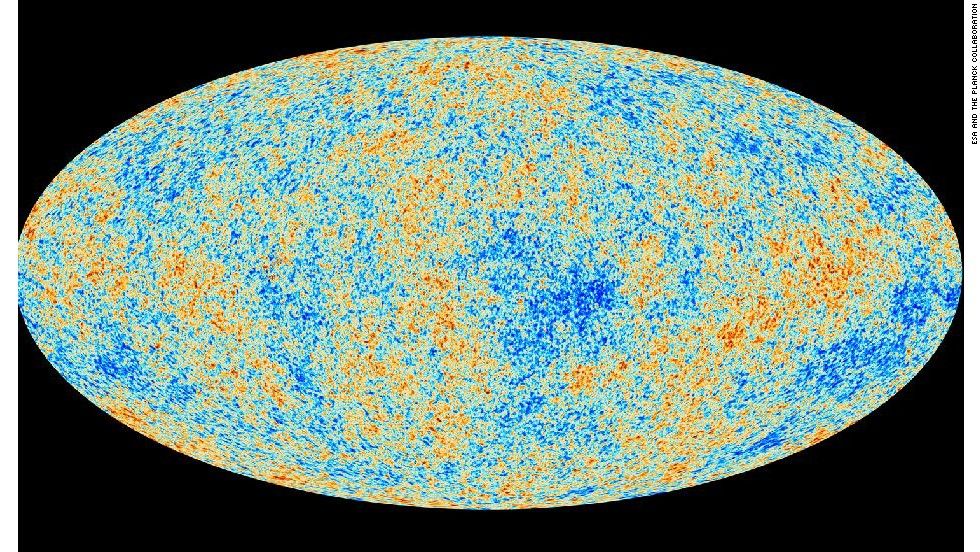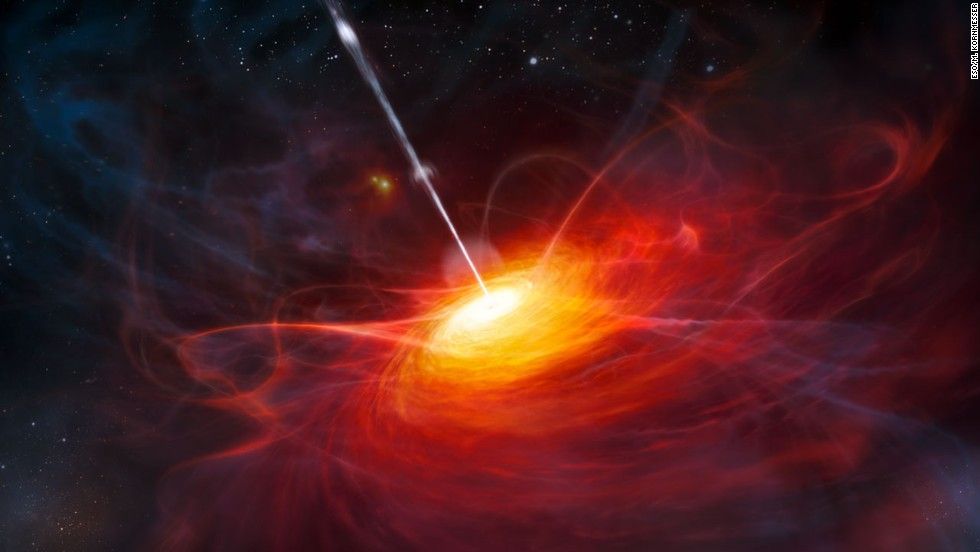Category: gravity
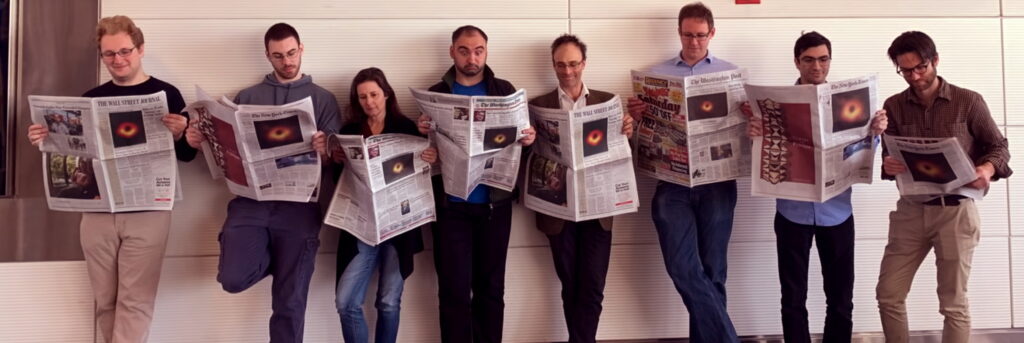
Stunning 1st image of Black Hole
Yesterday (Sep 5, 2019), the Breakthrough Prize Foundation awarded $21.6 million US dollars to the scientists behind a stunning achievement. They imaged a black hole. Although the image was announced and released 5 months ago, the story is still unfolding.
Yesterday (Sep 5, 2019), the Breakthrough Prize Foundation awarded $21.6 million US dollars to the scientists behind a stunning achievement. They imaged a black hole. Although the image was announced and released 5 months ago, the story is still unfolding.
The Breakthrough Prize is funded by Russian-Israeli billionaire Yuri Milner. It is the highest-paying science prize for researchers in life science, math, and physics.

Why it is dangerous to build ever larger big bang machines
CERN has revealed plans for a gigantic successor of the giant atom smasher LHC, the biggest machine ever built. Particle physicists will never stop to ask for ever larger big bang machines. But where are the limits for the ordinary society concerning costs and existential risks?
CERN boffins are already conducting a mega experiment at the LHC, a 27km circular particle collider, at the cost of several billion Euros to study conditions of matter as it existed fractions of a second after the big bang and to find the smallest particle possible – but the question is how could they ever know? Now, they pretend to be a little bit upset because they could not find any particles beyond the standard model, which means something they would not expect. To achieve that, particle physicists would like to build an even larger “Future Circular Collider” (FCC) near Geneva, where CERN enjoys extraterritorial status, with a ring of 100km – for about 24 billion Euros.
Experts point out that this research could be as limitless as the universe itself. The UK’s former Chief Scientific Advisor, Prof Sir David King told BBC: “We have to draw a line somewhere otherwise we end up with a collider that is so large that it goes around the equator. And if it doesn’t end there perhaps there will be a request for one that goes to the Moon and back.”
“There
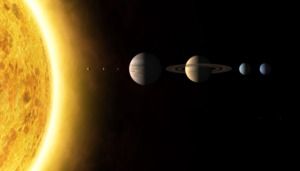
Solar System Map: Surprisingly deceptive
What’s wrong with this illustration of the planets in our solar system? »
For one thing, it suggests that the planets line up for photos on the same solar ray, just like baby ducks in a row. That’s a pretty rare occurrence—perhaps once in several billion years. In fact, Pluto doesn’t even orbit on the same plane as the planets. Its orbit is tilted 17 degrees. 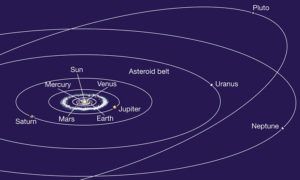 So, forget it lining up with anything, except on rare occasions, when it crosses the equatorial plane. On that day, you might get it to line up with one or two planets.
So, forget it lining up with anything, except on rare occasions, when it crosses the equatorial plane. On that day, you might get it to line up with one or two planets.
But what about scale? Space is so vast. Perhaps our solar system looks like this ↓
No such luck! Stars and planets do not fill a significant volume of the void. They are lonely specs in the great enveloping cosmic dark.* 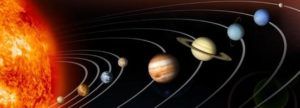 Space is mostly filled with—well—space! Lots and lots of it. In fact, if Pluto and our own moon were represented by just a single pixel on your computer screen, you wouldn’t see anything around it. Even if you daisy chain a few hundred computer screens, you will not discern the outer planets. They are just too far away.
Space is mostly filled with—well—space! Lots and lots of it. In fact, if Pluto and our own moon were represented by just a single pixel on your computer screen, you wouldn’t see anything around it. Even if you daisy chain a few hundred computer screens, you will not discern the outer planets. They are just too far away.
Josh Worth has created an interactive map of our solar system. For convenience, it also assumes that planets are lined up like ducks. But the relative sizes and distance between planets are accurate. Prepare to change your view of the cosmos…

Just swipe your finger from the right edge of the screen to move away from the sun. Despite a fascinating experience (and many cute, provocative Easter eggs hidden between the planets), few readers swipe all the way out to Pluto and the author credits. On my high-resolution monitor, it requires more than a thousand swipes. Imagine if the Moon had been more than 1 pixel…It would take a long, long time! I would rather go out to dinner and a movie. But I urge you to travel at least to Jupiter. At 1/7 of the trip to Pluto, it should take less than 5 minutes.
On this scale, you won’t see the 1½ or 2 million asteroids between Mars and Jupiter. They aren’t large enough to merit a pixel. As Josh states, “Most space charts leave out the most significant part – all the space.” (an Easter egg at 1.12 billion km on the map).
* I borrowed this phrase from my former Cornell professor, Carl Sagan. He uses it in Pale Blue Dot [timestamp 2:14.]. This video tribute became a touchstone in my life; even more than having Sagan as a professor and mentor.
If you view it, be sure to also view Consider Again, Sagan’s follow-up in the video below. It is a thought-provoking observation of human-chauvinism throughout history—even among ancient Greeks. Carl isn’t the first atheist, of course. But he is eloquent in describing mankind’s ego trip: The delusion of a privileged place in the universe, or the religious depiction of God and his relationship with our species.
Related:
- Carl Sagan Pale Blue Dot, a most impactful short video
- Consider Again the Pale Blue Dot, the arrogance of man throughout history
- Scale of the Universe: Powers of 10 (Charles & Ray Eames)
- Learn more about Charles and Ray Eames at Snore & Guzzle
- Our Universe is Finely Tuned for Life—Why?
Credit: ▪ Josh Worth and Sachin Gadhave who offers an illustrative answer at Quora.com
Philip Raymond co-chairs Crypsa & Bitcoin Event, columnist & board member at Lifeboat, editor
at WildDuck and will deliver the keynote address at Digital Currency Summit in Johannesburg.
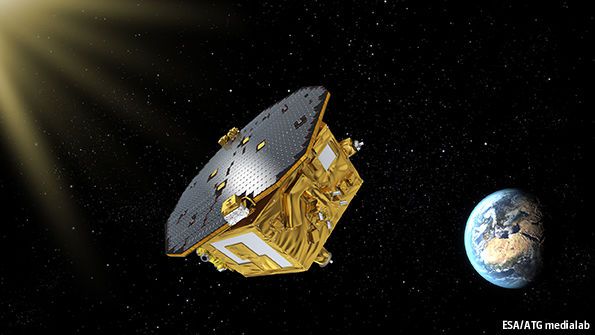
Gravity’s rainbow | The Economist
“LISA Pathfinder (the acronym stands for Laser Interferometer Space Antenna) is intended to demonstrate the technology needed to detect waves of gravity, rather than light, X-rays or gamma rays.”

Stephen Hawking speaks with virtually no muscular movement
Next January Stephen Hawking will be 74 years old. He has lived much longer than most individuals with his debilitating condition. In addition to being an unquestionably gifted cosmologist, he has invited controversy by supporting the pro-Palestinian, Israel-BDS boycott and warning about the dangers of alien invaders who tap into our interstellar greetings
Antisemitism, notwithstanding, this man is a mental giant. He is Leonardo. He is Einstein. Like them, his discoveries and theories will echo for generations beyond his life on earth. He is that genius.
Forty years ago, when Stephen Hawking still had mobility, he delivered a paper on a mystery regarding information-loss for entities that cross the event boundary of a black hole.
In the mid 1970s, Astronomers were just discovering black holes and tossing about various theories about the event horizon and its effect on the surrounding space-time. Many individuals still considered black holes to be theoretical. Hawking’s analysis of the information paradox seemed extremely esoteric. Yet, last month (Aug 2015) , at Sweeden’s KTH Royal Institute of Technology, Hawking presented a possible solution to the paradox that he sparked.
I can barely understand the issue and cannot articulately rephrase the problem. But my interest in the black hole event horizon takes a back seat to my interest in the amazing tool created to compensate for the famous cosmologist’s handicap. Watch closely as Stephen Hawking offers a new theory that provides a possible explanation for the paradox.
Near the end of the video (beginning at 7:22), the camera begins a steady zoom up to Hawking’s face. Unlike a year ago, when he could still smile at a joke or move his eyes, he now appears completely motionless. Throughout his speech, there is no sense of animation—not even a twitch—with or without purpose. His eyebrow doesn’t move, his fingers are not restless, he doesn’t blink anymore.
So, how, then, does Hawking speak with normal cadence and just a short delay between sentences? (If we assume that his computer adds emphasis without additional effort, I estimate that his ASCII communications rate is roughly equivalent to a 1200-baud modem, circa 1980). Yet, clearly, there must be a muscular conduit between thought and speech. How is it that his thoughts are converted to speech at almost the same rate as someone who is not paralyzed?
That magic is enabled by a tiny camera that monitors a slowly deteriorating cheek muscle. It is Hawking’s last connection to the outside world. What began as index cards with words and then an Apple II computer, has evolved into a sophisticated upgrade process involving cutting edge analysis of the professor’s slightest tick combined with sophisticated computing algorithms. The camera and software that interprets this microscopic Morse code is tied to a process that optimizes options for successive words and phrases. He is actually communicating at far less than 1200 baud, because—like a court stenographer—he employs shorthand and Huffman encoding to compress words and phrases into his twitch pipeline. Drawing on a powerful processor and connected to the Web, his gear is constantly upgraded by a specialized Intel design team.  They are engaged in a race to offer Hawking the potential for communication up until he has no capacity for interaction at all.
They are engaged in a race to offer Hawking the potential for communication up until he has no capacity for interaction at all.
In a recent documentary by Hawking himself,* he laments the likely day when he will no longer have any capacity for output at all. No ability to discuss physics and cosmology; no way to say “I need help” or “I love you”; no way to show any sign of cognition. At that time, he reflects, the outside world will no longer be certain that there is anything going on behind his blank stare. They will never really know when or if he wants them to pull the plug. Even more mind boggling, humanity will never know what secrets his brilliant mind has unlocked to mysteries of the cosmos.
* Referring to his 2013 autobiographical film and not the 2014 feature film about his life, Theory of Everything.
Philip Raymond is CEO and Co-Chair of CRYPSA,
The Cryptocurrency Standards Association.
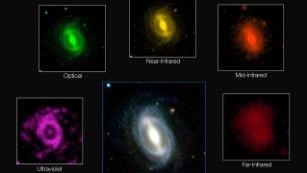
Slow death of Universe confirmed with precision
- The universe radiates only half as much energy as 2 billion years ago
- New findings establish cosmos’ decline with unprecedented precision
From CNN—The universe came in with the biggest bang ever. But now, with a drooping fizzle, it is in its swan song. The conclusion of a new astronomical study pulls no punches on this: “The Universe is slowly dying,” it reads.
Astronomers have believed as much for years, but the new findings establish the cosmos’ decline with unprecedented precision. An international team of 100 scientists used data from the world’s most powerful telescopes — based on land and in space — to study energy coming from more than 200,000 galaxies in a large sliver of the observable universe. [Full story below or at CNN.com]…
Based on those observations, they have confirmed the cosmos is radiating only half as much energy as it was 2 billion years ago. The astronomers published their study on Monday on the website of the European Southern Observatory.
The team checked the energy across a broad spectrum of lightwaves and other electromagnetic radiation and says it is fading through all wavelengths, from ultraviolet to far infrared.
Analysis across many wavelengths shows the universe’s electromagnetic energy output is dropping.
‘A cold, dark and desolate place’
At the ripe old age of nearly 13.8 billion years, the universe has arrived in its sunset years.
“The universe has basically sat down on the sofa, pulled up a blanket and is about to nod off for an eternal doze,” said astronomer Simon Driver, who led the team.
Death does not mean the universe will go away. It will still be there, but its stars and all else that produces light and stellar fire will fizzle out.
“It will just grow old forever, slowly converting less and less mass into energy as billions of years pass by until eventually, it will become a cold, dark and desolate place, where all of the lights go out,” said astronomer Luke Davies.
But don’t cry for the universe anytime soon. Astrophysicists say this will take trillions of years.
Bursting with energy
Go all the way back to its birth, and you find a vast contrast. In an infinitesimal fraction of a second, our entire cosmos blasted into existence in the Big Bang.
And the totality of the energy and mass in the universe originates from that moment, astronomers say.
Since that natal explosion, the cosmos has generated other sources of brilliant radiation — most notably stars — by converting some of the mass into energy when extreme gravity causes matter to burst into nuclear fusion.
But the universe is speckled by radiance from seething gas clouds, supernovas and, most spectacularly, the discs of hot matter that rotate around black holes to form quasars, which can be as bright as whole galaxies.
“While most of the energy sloshing around in the universe arose in the aftermath of the Big Bang, additional energy is constantly being generated by stars as they fuse elements like hydrogen and helium together,” Driver said.
Fizzling into space
The size and number of those sources of radiation so boggle the mind that it might be hard to imagine that the entirety of that vividness appears to be fading, as its energy flies off through space.
“This new energy is either absorbed by dust as it travels through the host galaxy, or escapes into intergalactic space and travels until it hits something, such as another star, a planet, or, very occasionally, a telescope mirror,” Driver said.
His team observed it from seven of the world’s mammoth telescopes spread out between Australia, the United States, Chile and Earth’s orbit. Many of the instruments specialize in receiving certain wavelengths of light and other electromagnetic waves.
Compiling the data from the collective wavelengths gives the scientists a more complete picture from across a broad spectrum of energy.
Their findings on the universe’s energy slump were part of the larger Galaxy And Mass Assembly, or GAMA, project to study how galaxies are formed. It has mapped out the position of 4 million galaxies so far.
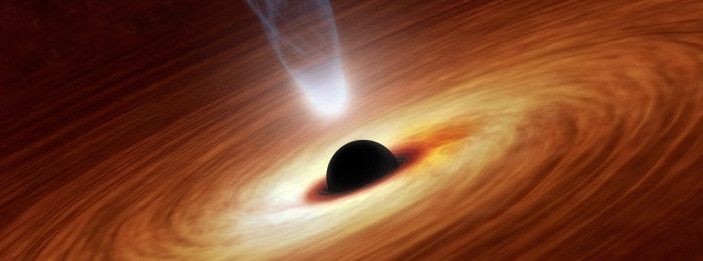
Universe might contain millions of black holes
[from Engadget]
Black holes are, by definition, impossible to see by conventional methods and are often further obscured by thick blankets of dust or gas. But that’s not an issue for NASA’s Nuclear Spectroscopic Telescope Array (NuSTAR). It can peek through the obscuring layers and monitor the black holes via the high-energy X-rays that they emit. And, after a recent survey that spotted five previously unknown supermassive black holes in the centers of various galaxies, NASA researchers now think there could be millions of of them dotting the Universe like the holes of an intergalactic colander.
“Thanks to NuSTAR, for the first time, we have been able to clearly identify these hidden monsters that are predicted to be there, but have previously been elusive because of their surrounding cocoons of material,” said George Lansbury of Durham University in a statement. “Although we have only detected five of these hidden supermassive black holes, when we extrapolate our results across the whole universe, then the predicted numbers are huge and in agreement with what we would expect to see.” The team’s research has been accepted for publication in The Astrophysical Journal.
Strings Are Dead
In 2014, I submitted my paper “A Universal Approach to Forces” to the journal Foundations of Physics. The 1999 Noble Laureate, Prof. Gerardus ‘t Hooft, editor of this journal, had suggested that I submit this paper to the journal Physics Essays.
My previous 2009 submission “Gravitational acceleration without mass and noninertia fields” to Physics Essays, had taken 1.5 years to review and be accepted. Therefore, I decided against Prof. Gerardus ‘t Hooft’s recommendation as I estimated that the entire 6 papers (now published as Super Physics for Super Technologies) would take up to 10 years and/or $20,000 to publish in peer reviewed journals.
Prof. Gerardus ‘t Hooft had brought up something interesting in his 2008 paper “A locally finite model for gravity” that “… absence of matter now no longer guarantees local flatness…” meaning that accelerations can be present in spacetime without the presence of mass. Wow! Isn’t this a precursor to propulsion physics, or the ability to modify spacetime without the use of mass?
As far as I could determine, he didn’t pursue this from the perspective of propulsion physics. A year earlier in 2007, I had just discovered the massless formula for gravitational acceleration g=τc^2, published in the Physics Essays paper referred above. In effect, g=τc^2 was the mathematical solution to Prof. Gerardus ‘t Hooft’s “… absence of matter now no longer guarantees local flatness…”
Prof. Gerardus ‘t Hooft used string theory to arrive at his inference. Could he empirically prove it? No, not with strings. It took a different approach, numerical modeling within the context of Einstein’s Special Theory of Relativity (STR) to derive a mathematic solution to Prof. Gerardus ‘t Hooft’s inference.
In 2013, I attended Dr. Brian Greens’s Gamow Memorial Lecture, held at the University of Colorado Boulder. If I had heard him correctly, the number of strings or string states being discovered has been increasing, and were now in the 10500 range.
I find these two encounters telling. While not rigorously proved, I infer that (i) string theories are unable to take us down a path the can be empirically proven, and (ii) they are opened ended i.e. they can be used to propose any specific set of outcomes based on any specific set of inputs. The problem with this is that you now have to find a theory for why a specific set of inputs. I would have thought that this would be heartbreaking for theoretical physicists.
In 2013, I presented the paper “Empirical Evidence Suggest A Need For A Different Gravitational Theory,” at the American Physical Society’s April conference held in Denver, CO. There I met some young physicists and asked them about working on gravity modification. One of them summarized it very well, “Do you want me to commit career suicide?” This explains why many of our young physicists continue to seek employment in the field of string theories where unfortunately, the hope of empirically testable findings, i.e. winning the Noble Prize, are next to nothing.
I think string theories are wrong.
Two transformations or contractions are present with motion, Lorentz-FitzGerald Transformation (LFT) in linear motion and Newtonian Gravitational Transformations (NGT) in gravitational fields.
The fundamental assumption or axiom of strings is that they expand when their energy (velocity) increases. This axiom (let’s name it the Tidal Axiom) appears to have its origins in tidal gravity attributed to Prof. Roger Penrose. That is, macro bodies elongate as the body falls into a gravitational field. To be consistent with NGT the atoms and elementary particles would contract in the direction of this fall. However, to be consistent with tidal gravity’s elongation, the distances between atoms in this macro body would increase at a rate consistent with the acceleration and velocities experienced by the various parts of this macro body. That is, as the atoms get flatter, the distances apart get longer. Therefore, for a string to be consistent with LFT and NGT it would have to contract, not expand. One suspects that this Tidal Axiom’s inconsistency with LFT and NGT has led to an explosion of string theories, each trying to explain Nature with no joy. See my peer-reviewed 2013 paper New Evidence, Conditions, Instruments & Experiments for Gravitational Theories published in the Journal of Modern Physics, for more.
The vindication of this contraction is the discovery of the massless formula for gravitational acceleration g=τc^2 using Newtonian Gravitational Transformations (NGT) to contract an elementary particle in a gravitational field. Neither quantum nor string theories have been able to achieve this, as quantum theories require point-like inelastic particles, while strings expand.
What worries me is that it takes about 70 to 100 years for a theory to evolve into commercially viable consumer products. Laser are good examples. So, if we are tying up our brightest scientific minds with theories that cannot lead to empirical validations, can we be the primary technological superpower a 100 years from now?
The massless formula for gravitational acceleration g=τc^2, shows us that new theories on gravity and force fields will be similar to General Relativity, which is only a gravity theory. The mass source in these new theories will be replaced by field and particle motions, not mass or momentum exchange. See my Journal of Modern Physics paper referred above on how to approach this and Super Physics for Super Technologies on how to accomplish this.
Therefore, given that the primary axiom, the Tidal Axiom, of string theories is incorrect it is vital that we recognize that any mathematical work derived from string theories is invalidated. And given that string theories are particle based theories, this mathematical work is not transferable to the new relativity type force field theories.
I forecast that both string and quantum gravity theories will be dead by 2017.
When I was seeking funding for my work, I looked at the Broad Agency Announcements (BAAs) for a category that includes gravity modification or interstellar propulsion. To my surprise, I could not find this category in any of our research organizations, including DARPA, NASA, National Science Foundation (NSF), Air Force Research Lab, Naval Research Lab, Sandia National Lab or the Missile Defense Agency.
So what are we going to do when our young graduates do not want to or cannot be employed in string theory disciplines?
(Originally published in the Huffington Post)
Honda’s Gravity Modification Research
Gravity modification, the scientific term for antigravity, is the ability to modify the gravitational field without the use of mass. Thus legacy physics, the RSQ (Relativity, String & Quantum) theories, cannot deliver either the physics or technology as these require mass as their field origin.
Ron Kita who recently received the first US patent (8901943) related to gravity modification, in recent history, introduced me to Dr. Takaaki Musha some years ago. Dr. Musha has a distinguished history researching Biefeld-Brown in Japan, going back to the late 1980s, and worked for the Ministry of Defense and Honda R&D.
Dr. Musha is currently editing New Frontiers in Space Propulsion (Nova Publishers) expected later this year. He is one of the founders of the International Society for Space Science whose aim is to develop new propulsion systems for interstellar travel.
Wait. What? Honda? Yes. For us Americans, it is unthinkable for General Motors to investigate gravity modification, and here was Honda in the 1990s, at that, researching this topic.
In recent years Biefeld-Brown has gained some notoriety as an ionic wind effect. I, too, was of this opinion until I read Dr. Musha’s 2008 paper “Explanation of Dynamical Biefeld-Brown Effect from the Standpoint of ZPF field.” Reading this paper I realized how thorough, detailed and meticulous Dr. Musha was. Quoting selected portions from Dr. Musha’s paper:
In 1956, T.T. Brown presented a discovery known as the Biefeld-Bown effect (abbreviated B-B effect) that a sufficiently charged capacitor with dielectrics exhibited unidirectional thrust in the direction of the positive plate.
From the 1st of February until the 1st of March in 1996, the research group of the HONDA R&D Institute conducted experiments to verify the B-B effect with an improved experimental device which rejected the influence of corona discharges and electric wind around the capacitor by setting the capacitor in the insulator oil contained within a metallic vessel … The experimental results measured by the Honda research group are shown …
V. Putz and K. Svozil,
… predicted that the electron experiences an increase in its rest mass under an intense electromagnetic field …
and the equivalent
… formula with respect to the mass shift of the electron under intense electromagnetic field was discovered by P. Milonni …
Dr. Musha concludes his paper with,
… The theoretical analysis result suggests that the impulsive electric field applied to the dielectric material may produce a sufficient artificial gravity to attain velocities comparable to chemical rockets.
Given, Honda R&D’s experimental research findings, this is a major step forward for the Biefeld-Brown effect, and Biefeld-Brown is back on the table as a potential propulsion technology.
We learn two lesson.
First, that any theoretical analysis of an experimental result is advanced or handicapped by the contemporary physics. While the experimental results remain valid, at the time of the publication, zero point fluctuation (ZPF) was the appropriate theory. However, per Prof. Robert Nemiroff’s 2012 stunning discovery that quantum foam and thus ZPF does not exist, the theoretical explanation for the Biefeld-Brown effect needs to be reinvestigated in light of Putz, Svozil and Milonni’s research findings. This is not an easy task as that part of the foundational legacy physics is now void.
Second, it took decades of Dr. Musha’s own research to correctly advise Honda R&D how to conduct with great care and attention to detail, this type of experimental research. I would advise anyone serious considering Biefeld-Brown experiments to talk to Dr. Musha, first.
Another example of similar lessons relates to the Finnish/Russian Dr. Podkletnov’s gravity shielding spinning superconducting ceramic disc i.e. an object placed above this spinning disc would lose weight.
I spent years reading and rereading Dr. Podkletnov’s two papers (the 1992 “A Possibility of Gravitational Force Shielding by Bulk YBa2Cu3O7-x Superconductor” and the 1997 “Weak gravitational shielding properties of composite bulk YBa2Cu3O7-x superconductor below 70K under e.m. field”) before I fully understood all the salient observations.
Any theory on Dr. Podkletnov’s experiments must explain four observations, the stationary disc weight loss, spinning disc weight loss, weight loss increase along a radial distance and weight increase. Other than my own work I haven’t see anyone else attempt to explain all four observation within the context of the same theoretical analysis. The most likely inference is that legacy physics does not have the tools to explore Podkletnov’s experiments.
But it gets worse.
Interest in Dr. Podkletnov’s work was destroyed by two papers claiming null results. First, Woods et al, (the 2001 “Gravity Modification by High-Temperature Superconductors”) and second, Hathaway et al (the 2002 “Gravity Modification Experiments Using a Rotating Superconducting Disk and Radio Frequency Fields”). Reading through these papers it was very clear to me that neither team were able to faithfully reproduce Dr. Podkletnov’s work.
My analysis of Dr. Podkletnov’s papers show that the disc is electrified and bi-layered. By bi-layered, the top side is superconducting and the bottom non-superconducting. Therefore, to get gravity modifying effects, the key to experimental success is, bottom side needs to be much thicker than the top. Without getting into too much detail, this would introduce asymmetrical field structures, and gravity modifying effects.
The necessary dialog between theoretical explanations and experimental insight is vital to any scientific study. Without this dialog, there arises confounding obstructions; theoretically impossible but experiments work or theoretically possible but experiments don’t work. With respect to Biefeld-Brown, Dr. Musha has completed the first iteration of this dialog.
Above all, we cannot be sure what we have discovered is correct until we have tested these discoveries under different circumstances. This is especially true for future propulsion technologies where we cannot depend on legacy physics for guidance, and essentially don’t understand what we are looking for.
In the current RSQ (pronounced risk) theory climate, propulsion physics is not a safe career path to select. I do hope that serious researchers reopen the case for both Biefeld-Brown and Podkletnov experiments, and the National Science Foundation (NSF) leads the way by providing funding to do so.
(Originally published in the Huffington Post)
